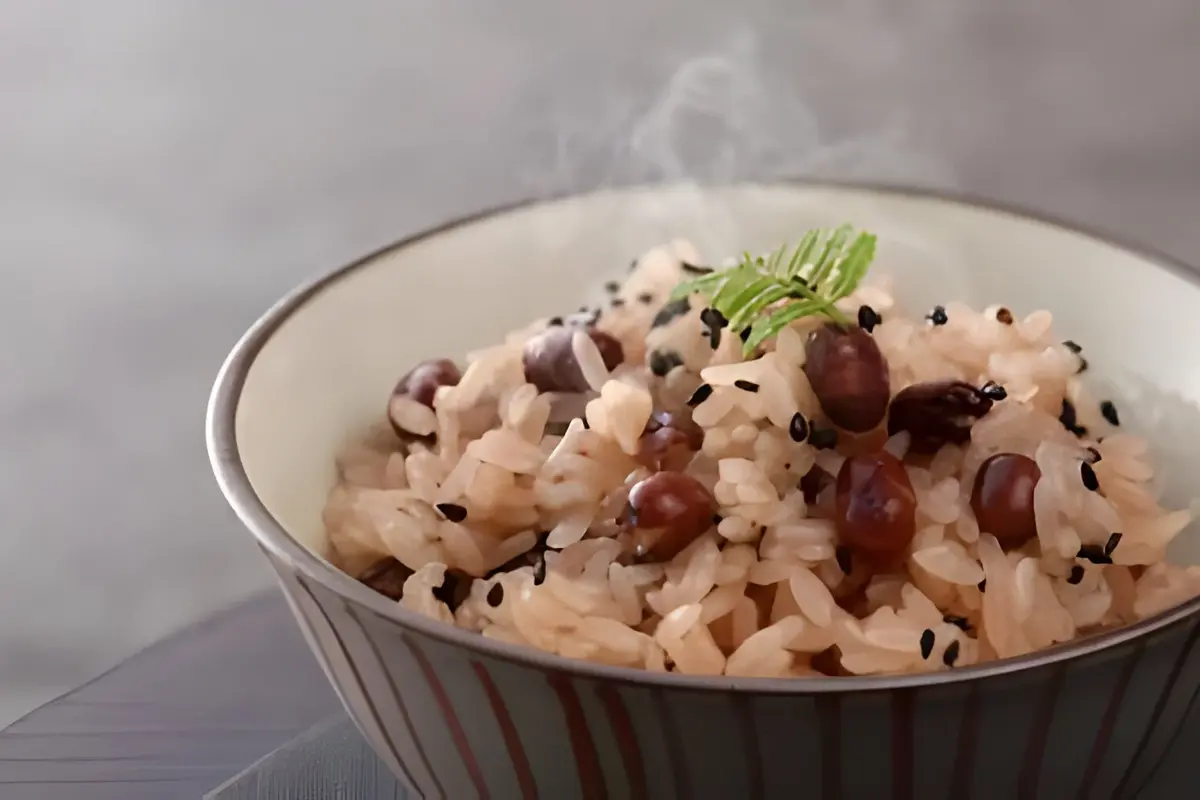Introduction: Unveiling the Health Secrets of Red Beans and Rice
Have you ever pondered the health implications of the classic dish, red beans and rice? This culinary staple, beloved across various cultures, offers more than just comfort food status. It’s a fusion of rich flavors and nutritional benefits, making it a subject of interest for health-conscious individuals. Let’s dive into the nutritional landscape of red beans and rice, exploring its components and answering the pivotal question: “Is red beans and rice healthy?”
Nutritional Benefits: Delving Deeper
Macronutrients and Micronutrients: The Foundation of Health
Red beans and rice, a dish celebrated for its flavor, also shines in nutritional value. It provides a robust amount of protein, essential for muscle repair and growth. Interestingly, red beans offer a plant-based protein source, making this dish an excellent option for vegetarians and meat-eaters alike. Moreover, it’s rich in fiber. This nutrient aids in digestion and keeps you feeling full longer, supporting weight management efforts.
Transitioning to micronutrients, red beans and rice is a treasure trove of vitamins and minerals. These include iron for energy, calcium for bone health, and magnesium for muscle function. Each serving contributes to your daily nutritional needs, making every bite count towards overall well-being.
Heart Health: A Vital Benefit
Furthermore, the fiber in red beans plays a crucial role in heart health. It helps lower cholesterol levels, reducing the risk of heart disease. Additionally, the antioxidants present in red beans combat inflammation, further protecting the heart.
Diabetes and Blood Sugar Control: A Balanced Approach
For those managing diabetes, red beans and rice offers a balanced meal option. The high fiber content moderates blood sugar levels, preventing spikes after meals. Thus, it’s a wise choice for maintaining stable energy throughout the day.
Weight Management: A Nutrient-Dense Option
Moreover, the nutrient density of red beans and rice supports weight management. The fiber promotes satiety, helping curb overeating. Plus, it’s a low-fat option that still satisfies hunger, making it easier to stick to a healthy eating plan.
Digestive Health: The Fiber Effect
Lastly, the benefits of fiber extend to digestive health. It encourages regular bowel movements and supports a healthy gut microbiome. This not only improves digestion but also enhances nutrient absorption.
Potential Health Concerns: Navigating the Pitfalls
Considerations and Cautions: What to Watch Out For
While red beans and rice boasts numerous health benefits, it’s wise to consider potential drawbacks. Awareness and moderation are key to enjoying this dish healthily.
Sodium Content in Canned Beans: A Salt Solution
Canned beans, a convenient option, often contain high sodium levels. However, you can mitigate this. Simply rinse the beans under cold water. This step can reduce sodium content by up to 40%. Always opt for low-sodium or no-salt-added varieties when available.
Arsenic in Rice: Making Safer Choices
Rice can accumulate arsenic from soil and water. Yet, you can lessen your exposure. How? Choose rice from regions with lower arsenic levels, like California, India, or Pakistan. Additionally, cooking rice in excess water, much like pasta, and then draining it, reduces arsenic content significantly.
Glycemic Index of White Rice: A Balancing Act
White rice has a high glycemic index (GI), potentially spiking blood sugar. But there’s a workaround. Pairing it with high-fiber red beans lowers the overall GI of the meal. For an even healthier twist, consider substituting white rice with brown or other whole grains. This swap introduces more nutrients and keeps blood sugar levels more stable.
Improving the Healthfulness of Red Beans and Rice
Making red beans and rice even healthier is straightforward. Let’s explore how to elevate this dish’s nutritional profile.
Choosing the Right Type of Rice: A Nutritious Shift
Firstly, the type of rice matters. While white rice is traditional, it’s not the only option. Brown rice, for instance, offers more fiber and nutrients. This simple swap can significantly enhance the dish’s health benefits. Additionally, other whole grains like quinoa or farro can introduce new textures and flavors, along with a nutritional boost.
Bean Varieties and Their Benefits: A Colorful Selection
Next, consider the beans. Red beans are nutritious, but don’t stop there. Black beans, kidney beans, and pinto beans are also excellent choices. Each type brings its own set of nutrients and antioxidants. Mixing different beans not only adds variety but also maximizes the health benefits.
Cooking Methods to Enhance Nutritional Value: Smart Techniques
Cooking methods also play a crucial role. For beans, using a slow cooker can make preparation easier and retain more nutrients. When seasoning, opt for natural herbs and spices instead of high-sodium seasonings. This approach keeps the flavor high but the sodium low.
Additional Ingredients for a Nutritional Boost: Veggie Power
Finally, boost the dish’s nutritional value by adding vegetables. Sautéing onions, garlic, and bell peppers not only enriches the flavor but also adds vitamins and antioxidants. Incorporating greens like spinach or kale can turn this dish into a one-pot wonder, full of fiber, vitamins, and minerals.
FAQs: Answering Your Top Questions
Is Red Beans and Rice a Complete Protein?
Yes, it is. Red beans and rice together form a complete protein. This means they provide all nine essential amino acids your body needs. Beans are rich in lysine but low in methionine. Rice, on the other hand, has plenty of methionine but lacks lysine. When you eat them together, they complement each other perfectly.
Can Red Beans and Rice Fit into a Weight Loss Diet?
Absolutely. Red beans and rice can be part of a weight loss diet. The key is portion control and preparation. This dish is high in fiber, which helps you feel full longer. To make it even healthier, use brown rice instead of white and add plenty of vegetables. These steps increase the nutrient content while keeping calories in check.
How Can I Reduce the Sodium Content in Canned Beans?
Reducing sodium is easy. Simply rinse canned beans in water before using them. This process can remove up to 40% of the sodium. Also, look for low-sodium or no-salt-added varieties at the store. These options are becoming more widely available and are a great choice for keeping sodium intake low.
What Are Some Healthy Additions to Red Beans and Rice?
There are many healthy additions. Consider adding vegetables like spinach, kale, or bell peppers to increase the dish’s vitamin, mineral, and fiber content. Spices and herbs, such as cumin, paprika, and cilantro, can enhance flavor without adding sodium. For an extra protein boost, mix in some grilled chicken or fish.
Can I Make Red Beans and Rice with Brown Rice?
Yes, you can, and it’s a great idea. Brown rice is a whole grain, meaning it contains more fiber and nutrients than white rice. It has a nuttier flavor and a chewier texture, which can add depth to the dish. Plus, it has a lower glycemic index, making it a better choice for blood sugar control.
Part 6: Creative Variations to Spice Up Your Red Beans and Rice
Experimenting with Grains: A World of Options
Let’s start with the base. While white rice is traditional, there’s a whole world of grains out there. Quinoa, for example, adds a protein punch and a unique texture. Farro brings a nutty flavor and chewy bite. Each grain offers its own set of nutrients and benefits. Mixing them up can keep your meals exciting and even more nutritious.
Protein Power: Adding More Muscle
Now, let’s talk protein. Red beans are great, but why stop there? Adding lean meats like chicken or turkey can boost the protein content. For a vegetarian twist, tofu or tempeh can be fantastic additions. These protein sources make the dish more filling and satisfying, perfect for post-workout meals or those extra hungry days.
Veggie Volume: Boosting Fiber and Nutrients
Vegetables can transform red beans and rice from a simple dish to a colorful, nutrient-dense meal. Spinach, kale, and Swiss chard wilt beautifully into the mix, adding vitamins and minerals. Bell peppers, zucchini, and carrots introduce crunch and color. The more veggies you add, the more health benefits you reap.
Flavor Infusions: Herbs and Spices
Flavor is key in making red beans and rice a dish you’ll crave. Fresh herbs like cilantro, parsley, or thyme add brightness and depth. Spices such as cumin, coriander, and smoked paprika can give it an aromatic kick. Don’t be afraid to experiment with different combinations to find your perfect blend.
Cooking Methods: Slow and Steady Wins the Race
Finally, consider how you cook your red beans and rice. Slow cookers and pressure cookers offer hands-off convenience, allowing flavors to meld beautifully. These methods can also make beans more digestible and grains perfectly tender. Plus, they free up your time for other activities while your meal cooks itself.
Conclusion: Embracing the Versatility and Health of Red Beans and Rice
In conclusion, red beans and rice is not just a dish; it’s a canvas for culinary creativity and nutritional excellence. We’ve explored its health benefits, from being a complete protein to aiding in weight management and improving heart health. We’ve navigated potential concerns, offering solutions to reduce sodium and arsenic levels. Moreover, we’ve delved into ways to enhance its nutritional profile, incorporating a variety of grains, proteins, and vegetables.
The journey through the world of red beans and rice reveals its flexibility. Whether swapping white rice for whole grains or adding a rainbow of vegetables, each variation not only adds flavor but also boosts the dish’s health benefits. Experimenting with herbs and spices, and exploring different cooking methods, can transform this classic dish into a modern health food.
This exploration underscores the importance of making informed food choices. By understanding the components of our meals, we can enjoy our favorite dishes in a way that supports our health and well-being. Red beans and rice, with its rich cultural heritage and nutritional value, exemplifies how traditional dishes can be adapted to fit a healthy lifestyle.
So, let’s celebrate the versatility and health benefits of red beans and rice. Embrace the opportunity to experiment with this dish, making it your own while keeping health at the forefront. Whether you’re a long-time fan or a curious newcomer, red beans and rice offers a delicious way to nourish your body and satisfy your soul.


